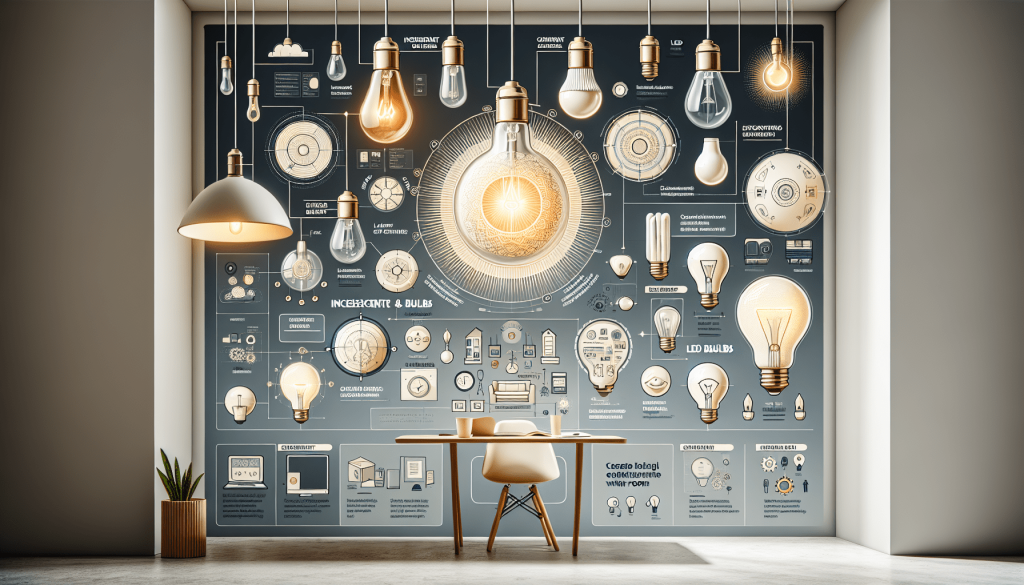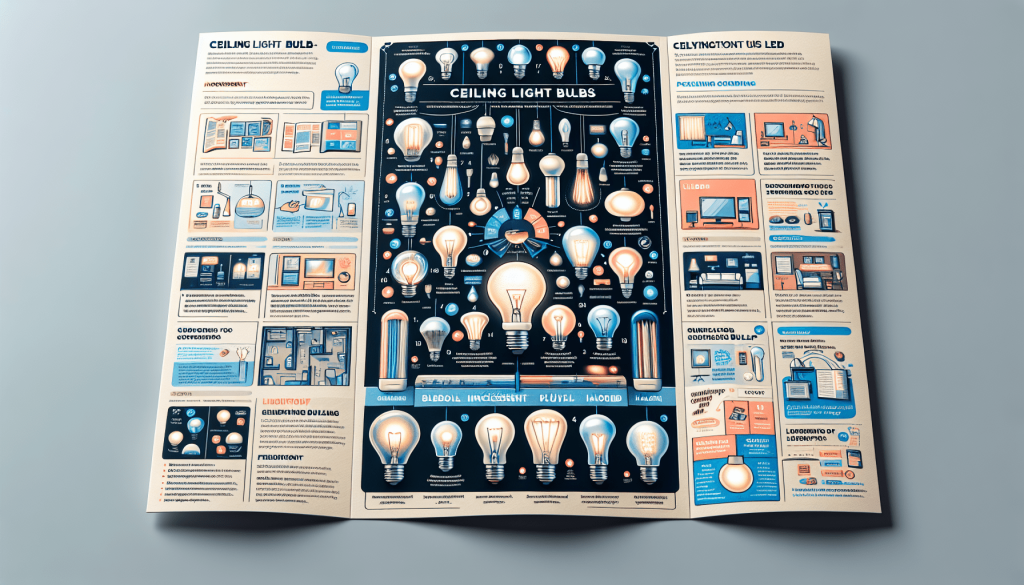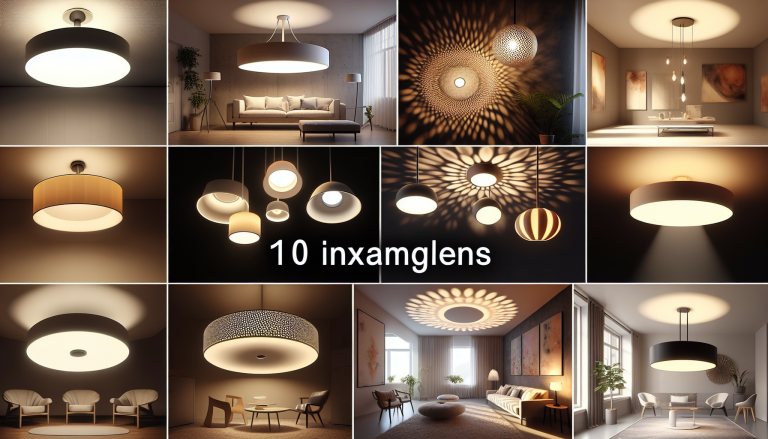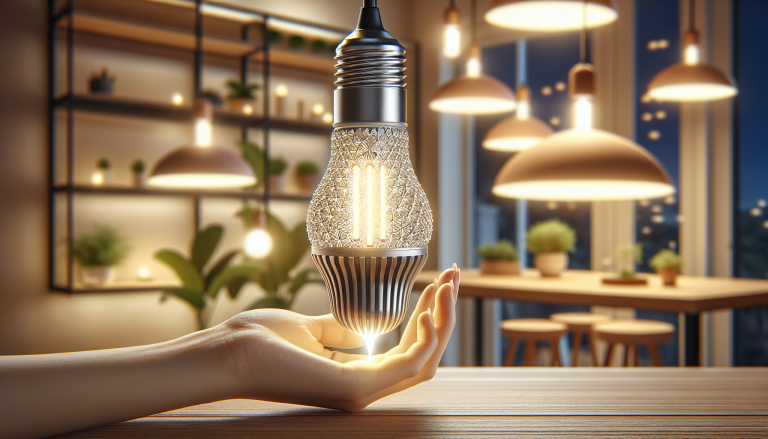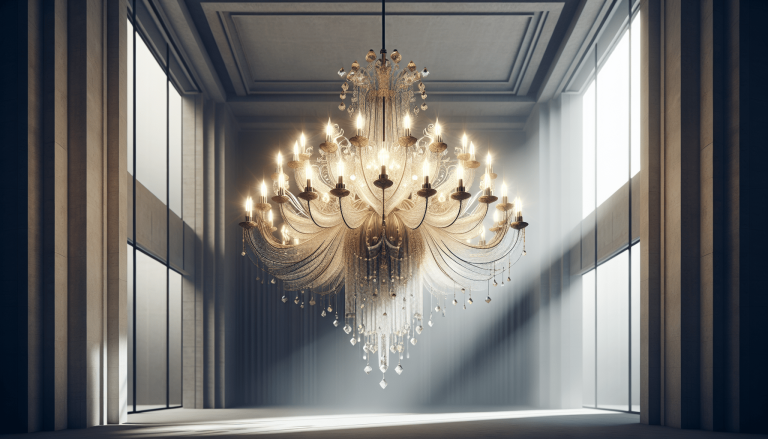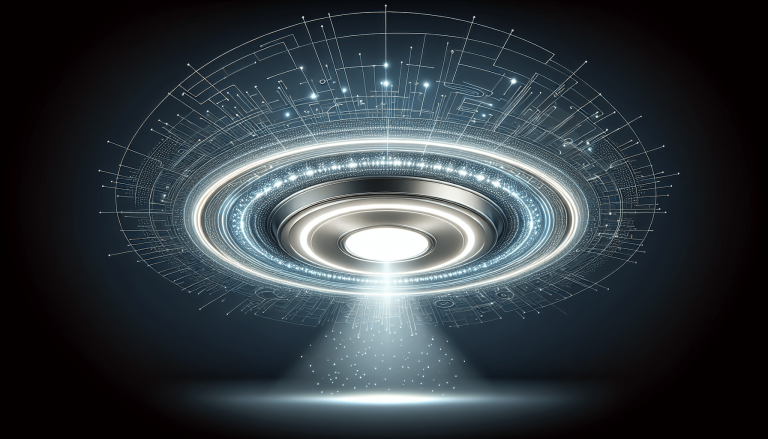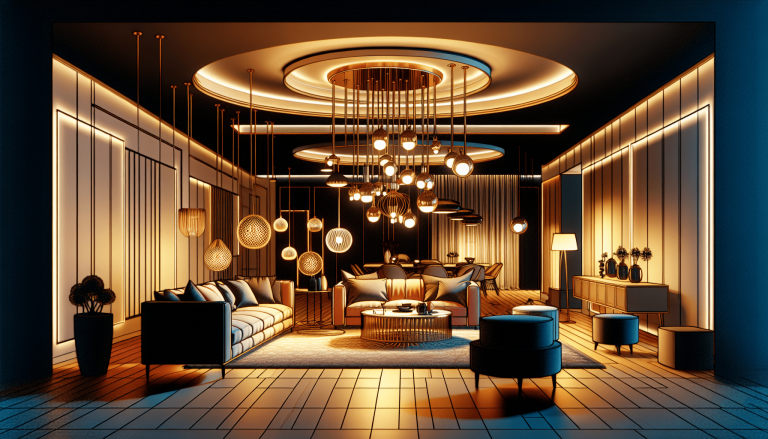Are you struggling to find the perfect bulbs for your ceiling lights? Look no further! In this ultimate guide, we will walk you through the process of selecting the right bulbs to achieve the perfect lighting for your space. Whether you want a warm and cozy ambiance or bright and energizing illumination, we’ve got you covered. Say goodbye to the endless trips to the store and the confusion of different bulb types. With our expert advice and tips, you’ll have your ceiling lights shining in no time!
Table of Contents
ToggleUnderstanding the Different Bulb Types
Incandescent Bulbs
Incandescent bulbs are the traditional choice in lighting, known for their warm and cozy glow. They work by passing an electric current through a thin wire filament, which then heats up and emits light. Incandescent bulbs are widely available and come in various shapes and sizes to fit different fixtures. However, they are not very energy-efficient, with a significant portion of the energy being wasted as heat rather than light. As a result, many countries are phasing out incandescent bulbs in favor of more energy-efficient alternatives.
Halogen Bulbs
Halogen bulbs are a type of incandescent bulb that uses a halogen gas to increase their lifespan and efficiency. They produce a bright, white light that is ideal for task lighting purposes. Halogen bulbs are commonly used in track lighting, recessed lighting, and desk lamps. They offer excellent color rendering, meaning they can accurately reproduce colors. However, they do tend to emit a significant amount of heat and consume more energy compared to other bulb types.
LED Bulbs
LED (Light Emitting Diode) bulbs are rapidly gaining popularity in the lighting industry due to their energy efficiency and long lifespan. LED bulbs use a semiconductor to emit light, making them more energy-efficient than incandescent or halogen bulbs. They come in various colors and can be dimmable, making them suitable for various lighting needs. LED bulbs are ideal for ceiling lights because they are durable and can withstand frequent switching. While LED bulbs may have a higher upfront cost, their long lifespan and energy savings make them a cost-effective option in the long run.
CFL Bulbs
CFL (Compact Fluorescent Lamp) bulbs are another energy-efficient option that is commonly used in homes and businesses. CFL bulbs use a combination of argon gas and mercury vapor to produce ultraviolet light. This light then interacts with a phosphor coating inside the bulb, resulting in visible light. CFL bulbs are available in a range of color temperatures and are known for their bright and cool light output. They are suitable for general lighting purposes and can be used in ceiling lights, lamps, and fixtures. However, CFL bulbs may take some time to reach their full brightness and are not dimmable in all cases.
Considering the Bulb Brightness
Choosing the Right Lumen Level
When selecting a bulb for your ceiling lights, it’s important to consider the desired brightness. Bulb brightness is measured in lumens, which refers to the amount of light emitted by the bulb. The higher the lumen output, the brighter the bulb will be. Consider the size of the room and the specific lighting needs when determining the appropriate lumen level. For example, a larger room may require a bulb with a higher lumen output to adequately illuminate the space.
Determining the Wattage Equivalent
In the past, wattage was used to determine bulb brightness. However, with the advent of energy-efficient bulbs, wattage no longer directly correlates to brightness. When choosing a bulb, look for the wattage equivalent, which indicates the approximate amount of light that the bulb provides compared to a traditional incandescent bulb. This will help you gauge the brightness of the bulb and make an informed decision.
Adjusting Brightness with Dimmer Compatibility
If you prefer to have control over the brightness of your ceiling lights, consider choosing bulbs that are compatible with dimmer switches. LED bulbs and some CFL bulbs are dimmable, allowing you to adjust the brightness to suit your needs. Keep in mind that not all bulbs are dimmer-compatible, so check the packaging or product specifications to ensure compatibility with your dimmer switch.
Selecting the Right Bulb Color Temperature
Understanding Kelvin Scale
Color temperature refers to the appearance of light produced by a bulb. It is measured on the Kelvin (K) scale. Lower Kelvin values, such as 2700K, produce a warm, yellowish light resembling traditional incandescent bulbs. Higher Kelvin values, such as 5000K, produce a cool, bluish light similar to daylight. Understanding the Kelvin scale can help you choose the right bulb color temperature to create the desired ambiance in your space.
Choosing Warm White Bulbs
Warm white bulbs typically have a color temperature between 2700K and 3000K. They emit a soft, yellowish light that creates a cozy and inviting atmosphere. Warm white bulbs are ideal for areas where you want to relax and unwind, such as living rooms, bedrooms, and dining areas. They are also well-suited for accent lighting, as they can enhance the warm tones in a room’s decor.
Opting for Cool White Bulbs
Cool white bulbs have a color temperature ranging from 3500K to 4100K. They produce a bright, crisp light that is often used in kitchens, bathrooms, and workspaces. Cool white bulbs are ideal for areas where you need to focus and perform tasks efficiently. They create an energizing and refreshing ambiance that can help increase productivity.
Considering Daylight Bulbs
Daylight bulbs have a color temperature of 5000K to 6500K. They emit a bright, bluish light that closely resembles natural daylight. Daylight bulbs are commonly used in art studios, offices, and spaces where accurate color representation is crucial. They provide excellent visibility and can help create a vibrant and stimulating atmosphere.
Determining the Bulb Lifespan and Efficiency
Comparing Bulb Lifespan
The bulb lifespan refers to the number of hours a bulb is expected to operate before it needs to be replaced. Incandescent bulbs typically have the shortest lifespan, averaging around 1,000 hours. Halogen bulbs can last slightly longer, with an average lifespan of 2,000 to 4,000 hours. CFL bulbs have a longer lifespan, averaging around 8,000 to 10,000 hours. LED bulbs, however, are the clear winner in terms of lifespan, lasting anywhere from 25,000 to 50,000 hours or more, greatly reducing the need for frequent bulb replacements.
Examining Energy Efficiency
Energy efficiency refers to how effectively a bulb converts electricity into light. Incandescent bulbs are the least efficient, as a significant portion of the energy is wasted as heat. Halogen bulbs are more efficient than incandescent bulbs but still consume more energy compared to LED and CFL bulbs. CFL bulbs are approximately four times more efficient than incandescent bulbs, while LED bulbs are the most energy-efficient, using up to 80% less energy than incandescent bulbs. Choosing energy-efficient bulbs can save you money on your electricity bills and reduce your environmental impact.
Evaluating Long-Term Cost Savings
When considering the lifespan and energy efficiency of a bulb, it’s important to evaluate the long-term cost savings. While energy-efficient bulbs may have a higher upfront cost, their long lifespan and energy savings can significantly reduce operating costs over time. Calculate the total cost of ownership, which includes the initial cost of the bulb, energy consumption, and expected lifespan, to determine the most cost-effective option for your ceiling lights.
Understanding Bulb Base Types
Common Base Types
Bulb base types determine how the bulb connects to the fixture. Common base types include screw-in bases such as Edison (E26/E27) and candelabra (E12), as well as pin-based types like bi-pin (GU10/GU5.3) and 2G11. Understanding these base types is crucial when selecting bulbs, as using the wrong base type will prevent the bulb from fitting properly or functioning correctly.
Matching the Bulb Base with Fixture
To ensure compatibility, match the bulb base with the fixture’s socket. Most fixtures will indicate the appropriate base type on the packaging or on the fixture itself. If you are unsure, consult the user manual or contact the manufacturer for clarification. Choosing the correct base type is essential to ensure a secure and reliable connection between the bulb and the fixture.
Taking Note of Bulb Size and Shape
A19 Bulbs
A19 bulbs are the standard bulb size and shape for many household fixtures. They have a traditional round shape and are commonly used in table lamps, floor lamps, and ceiling fixtures. A19 bulbs are versatile and widely available, making them a popular choice for general lighting purposes.
BR30 Bulbs
BR30 bulbs have a larger diameter compared to A19 bulbs and are typically used for recessed lighting and track lighting fixtures. They produce a wide beam of light that can evenly illuminate a room or highlight specific areas. BR30 bulbs are often used in kitchens, living rooms, and offices to provide adequate lighting coverage.
Globe Bulbs
Globe bulbs, as the name suggests, have a spherical shape and offer a unique aesthetic appeal. They are often used in pendant lights, chandeliers, and fixtures where the bulb is exposed. Globe bulbs can create a soft and diffused light, adding a touch of elegance to any space.
Candelabra Bulbs
Candelabra bulbs have a smaller base and are commonly used in decorative lighting fixtures such as chandeliers and wall sconces. They come in various shapes, including flame-shaped and candle-shaped, and emit a warm and inviting light. Candelabra bulbs can enhance the visual appeal of a room and are frequently used in dining areas and entryways.
Tube Bulbs
Tube bulbs, also known as linear fluorescent tubes, are long and narrow in shape. They are often used in commercial spaces, garages, and workshops. Tube bulbs provide a uniform and bright light that is ideal for task lighting purposes. They come in different lengths and wattages, so make sure to choose the appropriate size for your ceiling lights.
Choosing the Right Size and Shape for Your Ceiling Lights
Consider the design and functionality of your ceiling lights when selecting the bulb size and shape. If your fixture has a specific size requirement or unique shape, ensure that the bulb you choose fits properly and complements the overall aesthetics of the space.
Considering Bulb Beam Angle and Distribution
Understanding Beam Angle
Beam angle refers to the spread of light emitted by a bulb. It is usually measured in degrees and determines how wide or narrow the light beam will be. A wider beam angle provides a more dispersed light, while a narrower beam angle focuses the light in a specific direction.
Considering Wide Beam Angle for General Lighting
For ceiling lights used for general lighting purposes, such as illuminating a room evenly, a wide beam angle is recommended. A wider beam angle, typically between 90 to 120 degrees, ensures that the light is spread over a larger area, providing ample illumination for the space.
Opting for Narrow Beam Angle for Task Lighting
For ceiling lights used for task lighting, such as reading or working on specific projects, a narrower beam angle is preferable. A narrower beam angle, typically between 30 to 60 degrees, allows the light to be focused on a specific area, providing concentrated and targeted illumination. This can help minimize glare and improve visibility for the task at hand.
Choosing the Right Beam Angle for Your Ceiling Lights
Consider the purpose of your ceiling lights and the specific areas you want to illuminate when selecting the beam angle. Evaluate the size of the space, the height of the ceiling, and the desired lighting effect to determine the appropriate beam angle for your ceiling lights.
Factoring in Bulb Compatibility with Fixtures
Determining If the Bulb Fits the Fixture
Before purchasing a bulb for your ceiling lights, ensure that it is compatible with the fixture. Check the packaging or product specifications to determine if the bulb is suitable for your specific fixture type. Using the wrong bulb can lead to improper fitting, poor performance, or even damage to the fixture.
Checking for Voltage Compatibility
Another important factor to consider is the voltage compatibility between the bulb and the fixture. Most household fixtures operate on standard voltage (120V), but some specialized fixtures and commercial settings may require different voltage levels. Ensure that the bulb matches the voltage requirements of your fixture to avoid potential safety hazards or damage to the bulb.
Considering Overall Design Aesthetics
In addition to technical compatibility, consider the overall design aesthetics when choosing bulbs for your ceiling lights. Bulbs come in various shapes, sizes, and finishes, which can impact the visual appeal of your lighting fixtures. For exposed bulb fixtures, such as pendant lights, chandeliers, or wall sconces, the bulb itself becomes part of the design. Choose a bulb that complements the style and theme of your space to create a cohesive and visually appealing lighting fixture.
Weighing the Bulb Cost and Quality
Comparing Initial Cost
The initial cost of the bulb is an important consideration when choosing the right bulb for your ceiling lights. Incandescent bulbs are generally the least expensive, while LED bulbs tend to have a higher upfront cost. However, it’s essential to look beyond the initial cost and consider the long-term cost savings and lifespan of the bulb.
Evaluating Long-Term Cost-Effectiveness
While energy-efficient bulbs may have a higher upfront cost, they often provide significant long-term cost savings. LED bulbs, for example, consume less energy and have a significantly longer lifespan compared to incandescent bulbs. This translates into lower electricity bills and fewer bulb replacements over time, making them a more cost-effective option in the long run.
Considering Quality and Reliability
When choosing bulbs for your ceiling lights, prioritize quality and reliability. Look for reputable brands that offer warranties and have positive customer reviews. Quality bulbs can provide consistent performance, deliver accurate light output, and are less likely to fail prematurely. Investing in high-quality bulbs will ensure that your ceiling lights continue to illuminate your space effectively and reliably.
Evaluating Environmental Impact and Sustainability
Comparing Environmental Friendliness
Consider the environmental impact of different bulb types when making your selection. Incandescent bulbs are the least environmentally friendly, as they consume more energy and have a shorter lifespan. Halogen bulbs and CFL bulbs are more energy-efficient but contain small amounts of toxic chemicals such as mercury. LED bulbs are the most environmentally friendly option, as they use less energy, have a longer lifespan, and don’t contain hazardous materials.
Understanding Energy Consumption
Energy consumption is another factor to consider when evaluating the environmental impact of bulbs. LED bulbs are highly energy-efficient, using up to 80% less energy than incandescent bulbs. This reduced energy consumption helps lower greenhouse gas emissions and reduces the demand on power plants.
Choosing Bulbs with Low Environmental Impact
To minimize your environmental impact, prioritize LED bulbs or CFL bulbs with low mercury content. LED bulbs are highly energy-efficient and have a long lifespan, reducing the number of bulbs that end up in landfills. Additionally, many manufacturers and retailers offer recycling programs for CFL bulbs to ensure safe disposal of any mercury contained within the bulbs.
In conclusion, choosing the right bulbs for your ceiling lights involves considering various factors such as bulb type, brightness, color temperature, lifespan, efficiency, base type, size, beam angle, compatibility with fixtures, cost, and environmental impact. By understanding these different aspects and evaluating your specific lighting needs, you can make an informed decision that will enhance the aesthetics, functionality, and sustainability of your space. So take your time, explore your options, and find the perfect bulbs that will illuminate your ceiling lights for years to come. Happy lighting!

